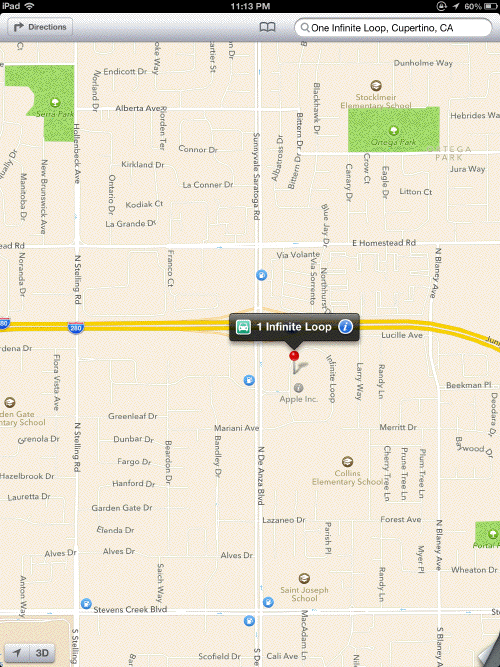Sunday, September 23, 2012; 11:22:47 PM Eastern
Why didn't Apple ease into maps?
false - When Apple switches basic technology it's almost always done in a gradual way, in stages.
- 1. First, it's optional. Only for the most adventurous users, developers usually.
- 2. Next, it's the default, but you can still run the old apps in a compatibility box.
- 3. Then they require you to install special software to run the old style stuff.
- 4. Then they introduce a version of the platform that only runs the new stuff.
- Apple technologies that have transitioned like that include the switchover from the 68K processor to the PowerPC. Then from the PowerPC to Intel. They brought in the NeXT OS that way. It took many years before they shipped a version of the OS that would not run Mac apps from before the transition to NeXT.
- People think they're doing that with app distribution on the Macintosh. And some people even think they're phasing out the Mac OS and that at some point they will say that Mac apps are "legacy" and eventually will ship a platform that only runs iOS apps. But that would have to be a long ways off, five or ten years, if ever.
- But this time Apple didn't do a gradual ease-in of their new maps platform. One day we had a maps platform by Google that mostly worked. It was replaced with Apple's maps technology which is most definitely not ready for end-users. And the Google maps platform is no longer available. It's a remarkably discontinuous change.
- Screen shot.

- It seems they could have shipped iOS 6 with the Google maps platform, and with a new app from Apple that implements their new maps technology. That would get it hundreds of thousands of users, immediately. The most change-averse users would stick with the existing maps app. And the power users, the insiders, those closest to Apple would help them fix the glitches and smooth things out so it would be ready in a year or two for the average iPhone or iPad users.
- They certainly haven't explained to users why they didn't also ship a Google maps platform. It's not as if the Google software won't run on the new version of the operating system. You can go to maps.google.com in Safari, and it works as before.
- User communities are layered. Think of concentric circles, like the layers of an onion. There's an inner core of users who are developers. They get the earliest releases of software, and know that what they're getting is both buggy and subject to change. They want that stuff, because they want to be ready when it ships with their own apps. After that there are enthusiasts. People who get glory from being early with the latest stuff. They also don't mind so much putting up with buggy or incomplete software. It validates their view of themselves as pioneers. And there are many more layers of expertise and tolerance for weird behavior, all the way out to the prototype end-end-user -- our mothers.
- It's surprising they would subject all levels of users to the quirkiest software, the stuff that usually only developers have to use, especially mapping software which is integral to using mobile devices. It's almost as if the NYC transit authority introduced new software for the subways, it's really that important these days to getting around. It's a very radical shift, with lots of problems, and they haven't provided an explanation of why it is this way. What other changes like this will they make? Why the change? What other Apple platforms are subject to this kind of change?
- See also: Apple's Feud With Google Is Now Felt on the iPhone.
- Update: Letter from Tim Cook to users re maps.